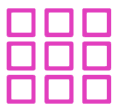A
Reply to the question below.
2) What you think about this submission:
Add New Comment
Q
How to make a heavy dialogue story appealing?
One of the things to keep in mind is ‘show, don’t tell’. Dialogue can work very well in a lot of instances, but if you can tell it to the audience in a visual way, that could be beneficial, especially in animation!
How to make a heavy dialogue sequence appealing mainly depends on the type of sequence / movie you’re trying you develop. Is it a high-tension conversation in which two persons are discussing, or rather a monologue where a heartbroken girl is telling herself how sad she is?
Another crucial thing is that you know what the intention of the dialogue is. What do you want to achieve with your dialogue, what’s the goal that the characters are moving towards? If it’s ‘just for talking sake’, you might want to reconsider if the whole sequence is even necessary.
If you’re going to work with a lot of dialogue, I would suggest to make sure that there’s structure in it and that it builds up to a climax (similar to a general story structure).
- On top of that (depending on what you’re trying to achieve), make sure you don't have the same intensity during your entire sequence when it comes to carrying out the dialogue.
In terms of deciding whether to tell things through dialogue or visually, I would suggest the following. Write the first outline of your sequence / film. After that, take a step back and look at all the moments that contain heavy dialogue. See if you can 1. Tell it in a visual way and 2. if you actually want to tell it in a visual way. A combination of the two is always strong, depending on what you want to achieve.
Besides the actual writing and structure, you want to have characters that are well suited to ‘play’ this role, whether they are real (voice) actors or drawn figures; this also taps into your character development; give them traits that stand out, but that don’t draw the attention away.
Just as important (or even more important) as the parts of the conversation where a person is talking, are the reactions of the person being spoken to. Is he or she listening carefully to what is said to him? Is the listener impatient, wanting to respond as soon as possible? Or ticking with a spoon to a tea cup? These kinds of actions, together with the action of the speaker, are crucial for creating believable dialogue. So, don’t only write down the dialogue itself, but also the actions / reactions that the characters are performing.
- A way you could practice how ‘the listener’ would respond to dialogue, is to play a monologue of a movie on YouTube, stand in front of a mirror and try to react to what that character is saying. Improv classes could be very useful as well.
Visually speaking about dialogue, cinematography is another great thing to apply.
A static camera with only over-the-shoulder shots can work very well to create focus, while insert shots or rapid cuts can increase tension. Cinematography often goes hand in hand with the timing of the shots.
Here are some articles to learn more about the use of heavy dialogue;
- https://www.reddit.com/r/writing/comments/50bte6/dialogueheavy_scenes/
- https://nybookeditors.com/2017/05/your-guide-to-writing-better-dialogue/
- https://www.premiumbeat.com/blog/tips-keeping-long-dialogue-scene-visually-interesting/
- https://tvtropes.org/pmwiki/posts.php?discussion=14226810360A01728900&page=0
SUPPORT SESSION (26 Oct): How to make a heavy dialogue story appealing?

This is where the description will go. It adapts to the size of the description and title, maintaining a minimum of 64px margin above and below while also maintaining a width of 80 perfect of the grid section.
Team:
Team
Team:
Team
An error occurred. Try again later
Edit Question
Your question has been uploaded.










